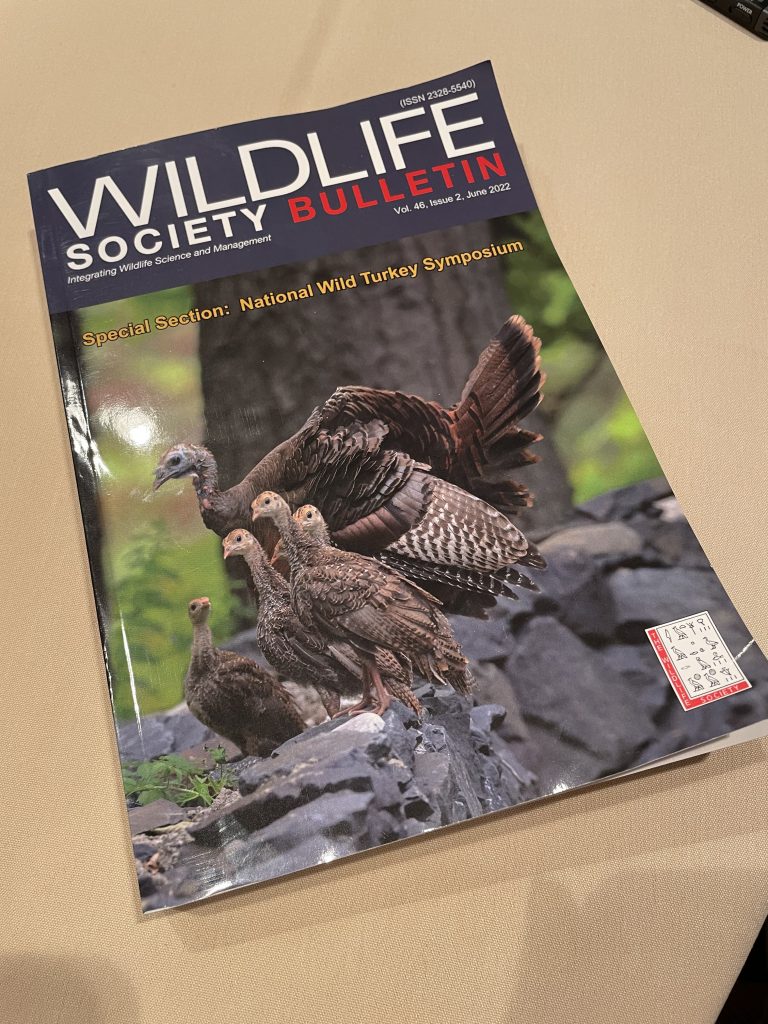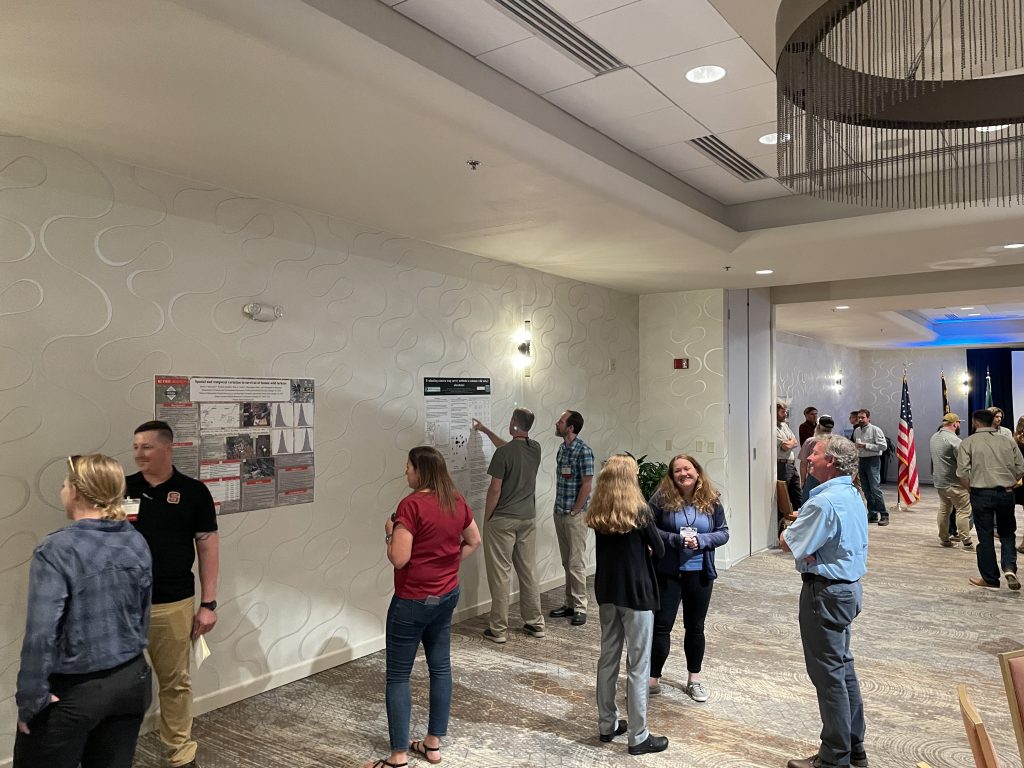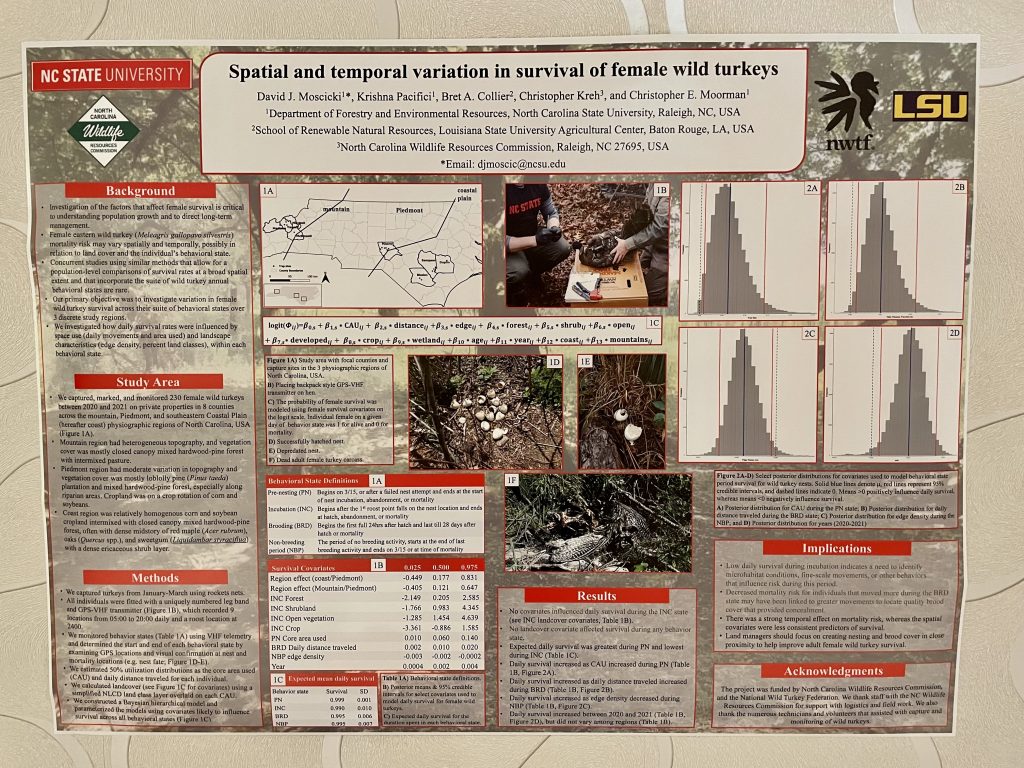Symposium Concludes with Celebration and Acknowledgement of More to be Done
The final day of the 12th National Wild Turkey Symposium concluded with acknowledging the past, celebrating the last three days and continuing the momentum for the foreseeable future.
Throughout the last day, wild turkey researchers continued to share the findings of projects that have been years in the making, which were presented in two overarching sessions, population dynamics and reproductive ecology. Despite being in just two themes, presentations covered various novel and pressing topics.

For instance, Brett Collier, Ph.D., associate professor at the Louisiana State University School Renewable Natural Resources, discussed a new way to look at wild turkey nest predators.
Nest abandonment and predation are both driven by predator movement, Collier explained as he presented “Spatial Distribution of Potential Wild Turkey Nest Predators in West-Central Louisiana.”
Collier described that it has become commonplace in the wild turkey research community to examine vegetative structure as it relates to wild turkey nesting. Still, the LSU professor suggested that is only one side of the equation to understanding why wild turkey nests fail.
“We’ve been measuring vegetation for years, but maybe we haven’t been measuring the right vegetation,” Collier said. “Maybe the question isn’t ‘what vegetation the turkeys are using,’ maybe it’s ‘what vegetation are predators not using.’ And we don’t focus on that side of the equation hardly at all.”
Throughout the day, researchers presented data that complemented each other and material that went against the grain.
“That is how we have meaningful growth that helps us address wild turkeys in the most productive way,” said Mark Hatfield, NWTF director of conservation services. “If we never challenged each other, we would never make any progress.”
Presentations in the population dynamics category included:
• “Fort Ancient Turkey Management in Northern Kentucky,” presented by Gwynn Henderson;
• “A Review of Harvest and Population Monitoring Methods for Western Wild Turkeys,” presented by Brian Wakeling of Montana Department of Fish, Wildlife and Parks;
• “Impact of Feral Hog Presence on Occupancy and Detectability of Wild Turkeys in Arkansas Mountain Regions,” presented by Doug Osborne of the University of Arkansas;
• “Using Statistical Population Reconstruction to Estimate Demographics in Wild Turkey Populations,” presented by Michael Clawson of the University of Washington;
• “Breeding Season Survival of Female Rio Grande Wild Turkeys in South Central Texas,” presented by Brett Collier of Louisiana State University;
• “Hunting and Environmental Influences on Male Eastern Wild Turkey Survival in Virginia and West Virginia,” presented by Daniel Crawford of The Jones Center;
• “Fifty-Years of Spring Wild Turkey Harvest in Indiana, 1970-2019,” presented by Steven Backs of the Indiana Division of Fish and Wildlife.
Presentations in the reproductive ecology session included:
• “Nest Fidelity and Nesting Success of Female Wild Turkeys,” presented by Michael Byrne of the University of Missouri;
• “Variation in Wild Turkey Nesting and Phenology at their Northern Range Limit,” presented by Matthew Gonnerman of the University of Maine;
• “Recursive Movement Patterns of Eastern Wild Turkey Broods in the Southeastern United States,” Nicholas Bakner of the Florida Wildlife and Conservation Commission;
• “Effects of Frequent Landscape Disturbance on Pre-Nesting Space Use and Nest-Site Searching of Eastern Wild Turkey,” presented by Tyler Pittman of the Florida Fish and Wildlife Commission;
• “Linking Movement Data to Nesting Behavior of Wild Turkey Hens in Florida,” presented by Bobbi Carpenter of the Florida Fish and Wildlife Conservation Commission;
• “Developing a Predator Risk Gradient for Nesting Wild Turkeys,” presented by Collier; and
• “How Prevalent is Brood Parasitism in Wild Turkeys,” presented by Mike Chamberlain of the University of Georgia.
After presentations, the symposium’s poster reception gave researchers a chance to show off their research both concisely and creatively.


Following a week full of meaningful discussions, field trips and progress, the symposium concluded with acknowledging the past and continuing the momentum far into the future.
“There’s a lot of people that have allowed us to get here that are not here tonight, and we all owe them gratitude and thanks for creating the stage and creating the platform for us to continue this important work,” said Hatfield at the symposium’s closing banquet. “I think everybody recognizes the challenges we face moving forward. The NWTF is committed to expanding this body of work, so we’re committed to having the 13th symposium in 2025. We are going to keep turkey research relevant, and we are going to continue this momentum we created this year. Thank you all for the passion you’ve brought to the resource.”
Keep an eye out for the forthcoming NWTF’s Turkey Call All-Access Podcast, where the NWTF sits down with researchers, personalities and NWTF biologists to distill this information and what it means for turkey hunters.
